Jump. Mud. Bubble. The 3 Habits Your Defense Is Missing
Most coaches think defense starts with hustle. And that’s true—but hustle without habits is just chaos.
If you want a team that can string together stops and win tight games when you really need them to, it starts with teaching intentional defensive habits. And this defensive habit drill will help you get there.
We call it Jump, Mud, Bubble.
I know… it sounds like a weird new TikTok trend the kids are doing…but it’s not. It’s a competitive 3-on-3 defensive habit drill designed to instill three essential on-ball and off-ball habits.
And more importantly, it builds communication that sticks.
Oh, and if you like these tips, be sure to check out the following resources as well…
- Smarter Closeouts: How to Defend Shooters, Drivers, and Complete Players
- How to Train Help Defenders to Win 2-on-1 Situations
- 45 Scramble Down: Build Communication, Rotations, and Recovery in One High-Impact Drill
Anyways, let’s break down each habit…
Defensive Habit #1. JUMP to the Ball
Every time the ball is passed or dribbled, everyone on defense jumps to the ball.
We don’t watch. We don’t pause. We don’t hope help will arrive.
We JUMP—into help, into the gap, into a loaded stance. It’s all about action!
Why it matters:
Jumping to the ball puts your defense in position to help early, not late. It prevents cutters, discourages drives, and keeps weakside defenders ready to rotate.
During this defensive habit drill, you want each player to yell the word “JUMP!”–the simple act of shouting the term isn’t just about communicating… It’s going to help them build this important habit.
Defensive Habit #2. Mud
When a defender is one pass away, they live in the mud—that space where it’s just uncomfortable enough for the player they’re guarding.
You’re not giving them a clean catch, and you’re not giving them a driving lane. You’re muddying the water.
Why it matters:
The best defenses don’t just stop layups. They stop rhythm. They disrupt timing. They force hesitation.
That’s what “Mud” does.
And again, every time a defender is one pass away, players will shout, “Mud!”
Saying it builds the defensive habit. Hearing it reinforces it.
Defensive Habit #3. Bubble
This is the last piece to layer in.
Bubble is defined as the space within an arm’s reach of the ball-handler. And we want to pop that bubble in every single possession.
It’s not about fouling—it’s about pressure.
We want a hand in the bubble. We want the offense to feel us. Every time the ball moves, we’re there—in the bubble.
Why it matters:
Too often, defenders play passive. They give space because they’re afraid of getting beat. But ball pressure shrinks the floor and speeds up the offense. It creates turnovers, bad shots, and broken plays.
How the Drill Works
- 3 offensive players, 3 defenders
- Live action with no screens or post-ups—just drives, cuts, and shots
- If the defense gets a stop and the rebound, they stay on
- If the offense scores, they rotate to defense
- Every rep is about competition and habit formation
Reminder: it’s really important that players call out each habit…
- “Jump!”
- “Mud!”
- “Bubble!”
If their teammate can’t hear it clearly? That triggers instant peer feedback, further reinforcing the habit.
The Real Win
This defensive habit drill is all about training intentional defenders who take ownership of their communication and positioning.
At the end of this drill, your players will not only be better defenders, but they’ll be capable of coaching themselves and others.
See the Basketball Defensive Communication Drill in Action
FAQ: Jump, Mud, Bubble – The Defensive Habits That Turn Effort into Stops
These FAQs help coaches deepen their understanding of the Jump, Mud, Bubble defensive drill, explain its core concepts, and translate those concepts into repeatable team habits.
Q: What does “Jump to the Ball” mean in defense?
A: “Jump to the Ball” is a defensive habit where players reposition themselves toward the ball every time it’s passed or dribbled. This ensures:
- Early help-side positioning
- Gap coverage for driving lanes
- Readiness for rotations and closeouts
By calling out “Jump!” on every movement, defenders internalize this habit.
Use it in every shell drill or 3-on-3 setup to build automatic help-side positioning.
Q: What does “Mud” mean in basketball defense?
A: “Mud” refers to the space one pass away from the ball, where defenders make life uncomfortable for their man:
- No clean catches
- Delayed rhythm
- Hesitation on drives or shots
Defenders call out “Mud!” to signal pressure in that zone and disrupt timing.
Reinforce “Mud” by rewarding disruptions, deflections, and late catches in drills.
Q: What is the “Bubble” in on-ball defense?
A: The “Bubble” is the arm’s reach zone around the ball handler. Defenders are trained to:
- Pop the bubble with active hands
- Apply legal pressure
- Force faster decisions and off-balance moves
It shrinks the offensive space and builds intensity.
Use “Bubble!” as a cue to increase defensive pressure without fouling.
Q: How do you run the Jump, Mud, Bubble defensive drill?
A: Set up 3-on-3 live play:
- No screens or post-ups—just live cuts, drives, and shots
- Defense rotates out on a score
- Defense stays in on a stop and rebound
Players must call out “Jump,” “Mud,” or “Bubble” aloud during each rep. Lack of communication triggers immediate peer correction.
Use a rotation board or scoreboard to track stops and create high-stakes reps.
Q: Why is verbal communication part of this drill?
A: Calling out “Jump,” “Mud,” and “Bubble” reinforces:
- Real-time positioning habits
- Shared defensive language
- Player accountability and feedback
The verbal cue connects body positioning with brain activation, making habits stick.
Turn defensive communication into a non-negotiable part of every rep.
Q: How can I use this drill to build defensive culture?
A: This drill:
- Creates shared habits and terminology
- Builds team accountability through peer feedback
- Trains communication to be loud, clear, and purposeful
Over time, you’ll hear these terms naturally used in scrimmages and games.
Make “Jump, Mud, Bubble” a weekly staple in your team’s identity drills.
Q: Can I modify this drill for younger or less experienced players?
A: Absolutely. Start by:
- Focusing on just one habit per session (e.g., “Jump”)
- Slowing down reps for instruction
- Using guided defense with clear visual targets
As players improve, layer in “Mud” and “Bubble” with live action.
Scaffold the habits, then increase speed and intensity as players grow more confident.
Q: What should I listen for to know the drill is working?
A: Listen for:
- Clear verbal cues from all defenders
- Instant adjustments on passes
- Peer coaching and correction
- Fewer blow-bys and cleaner rotations
When “Jump,” “Mud,” and “Bubble” become second nature, your defense gains rhythm and identity.
Film a rep of this drill and use it for post-practice feedback with your team.
Q: Where can I find more drills to teach defensive habits and language?
A: Inside the PGC Coaching Community, you’ll find:
- Game-like defensive breakdowns
- Team-wide communication systems
- Daily defensive language routines
Get access with a free 7-day trial and start building a culture of defense.
Join the PGC Coaching Community to develop defenders who lead, communicate, and compete together.
Train Communication + Positioning = Stops
The Jump, Mud, Bubble drill teaches more than technique—it trains mindset. With clear cues, high reps, and peer accountability, your team will transform into one that talks early, rotates on time, and defends every inch with pride.
Want more drills and tips just like these? Get FREE instant access to every defensive drill, tactic, and strategy we’ve ever created for 7 days.
– TJ
Check out all of our defensive drills and strategy resources here.
About the Author
TJ Rosene
Coach TJ Rosene, head coach of the Emmanuel University men’s basketball team and Director of Coach Development for PGC Coaching, has spent his career shaping young athletes both on and off the court. With over 400 career wins and 12 seasons of 20+ wins, Rosene’s coaching experience is extensive and impressive. His teams have competed in six national championship games, winning three NCCAA National Championships. Under his leadership, the Lions made their NCAA Division II debut in 2018-19 and quickly captured two season titles and one tournament title, along with an appearance in the NCAA Division II Sweet 16 in 2021.
Rosene’s success expands far beyond the scoreboard. He’s been named National Coach of the Year three times and Conference Carolinas Coach of the Year twice. But for Coach Rosene, the most meaningful part of his work is the lasting impact he has on his players’ lives. As he puts it, “Coaching is a rare opportunity to shape and mold the lives of young people. It’s a privilege that I never take for granted.”
New Here?
Get coaching tips and tools like these delivered to your inbox each week!
Join the 15,000 coaches we’ve assisted…
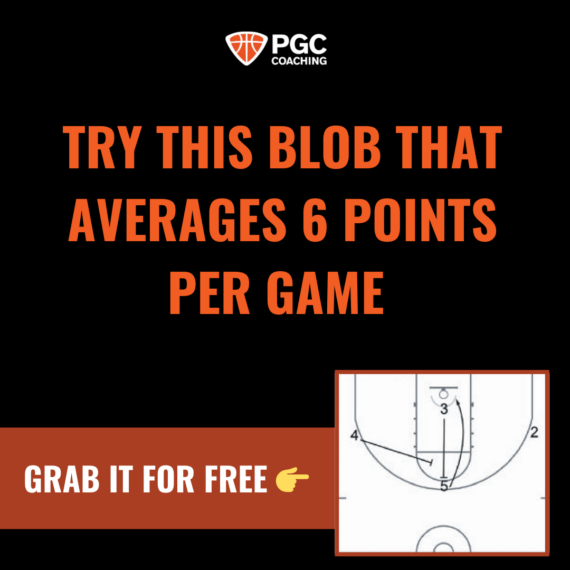
Related Articles
How to Teach On-Ball Defense That Actually Works in Games
Build lockdown defenders with 5 simple on-ball habits every coach needs to teach. Start winning more defensive battles today!
45 Scramble Down: Build Defensive Communication, Rotations, & Recovery in One High-Impact Drill
Master defensive chaos with the 45 Scramble Down Drill — boost your team’s communication, quick rotations, and clutch stops under pressure. Ready to take your defense to the next level?
Competitive 4-on-4 Basketball Drill to Build Decision-Making, Shot Selection, & Defensive Grit
Train like you play. This 4-on-4 drill builds real-game toughness, smart decisions, and winning habits—every possession counts.
About PGC
PGC Basketball provides intense, no-nonsense basketball training for players and coaches. Our basketball camps are designed to teach players of all positions to play smart basketball, be coaches on the court, and be leaders in practices, games and in everyday life.
We combine our unique PGC culture with a variety of teaching methods and learning environments to maximize the learning potential of those that attend our sessions. In addition to spending 6-7 hours on the court each day, lessons will be reinforced through classroom sessions and video analysis.
Our goal at PGC is to empower you with the tools to fulfill your basketball dreams, while also assisting you in experiencing the joy of the journey.
To learn more about PGC Basketball, including additional basketball training tips and videos, visit our YouTube Channel or find us on Facebook, Instagram, and Twitter.

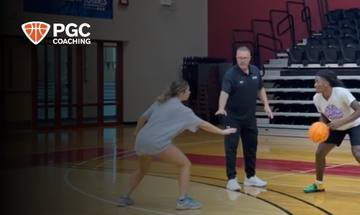
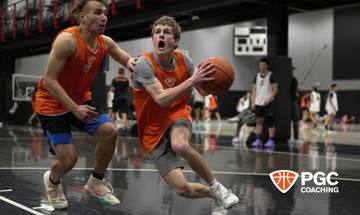
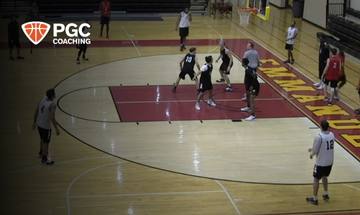
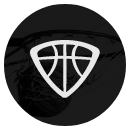

Share This Post